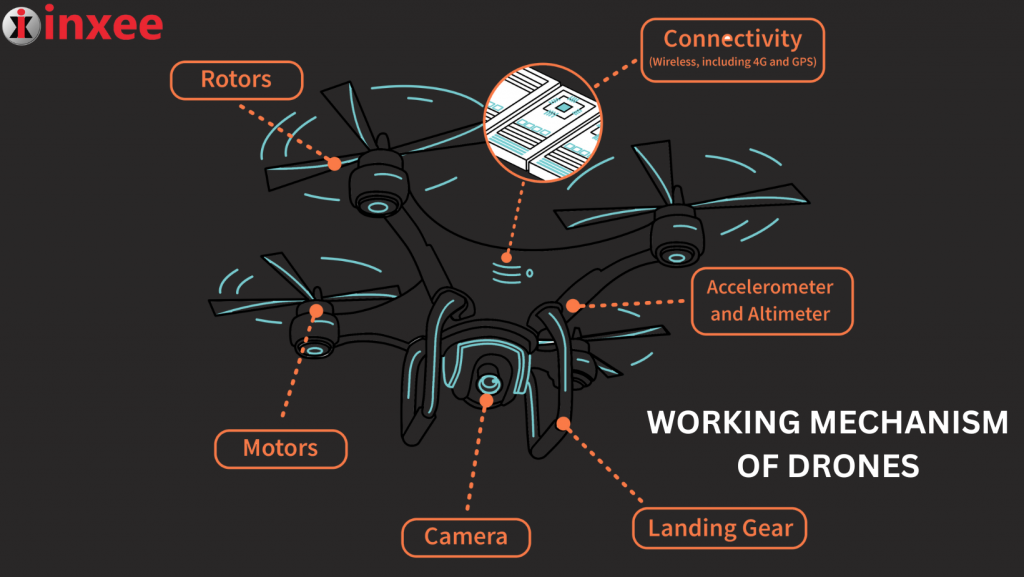Drones: Working Mechanism

Drones, also known as Unmanned Aerial Vehicles (UAVs), have revolutionized the way we gather information, perform tasks, and conduct research. These devices have become increasingly popular in recent years, and their applications span a broad range of industries, including agriculture, construction, cinematography, and military operations.
Working of a Drone:
Drones work by following a set of instructions that are programmed into their system. Once the drone is turned on, it scans the area and takes measurements to determine its location and altitude. The operator then inputs commands into the controller, which sends signals to the drone’s onboard computer. The computer processes the signals and sends instructions to the motors, propelling the drone in the desired direction.
The drones’ sensors play a crucial role in their functionality. They include:
- GPS: The Global Positioning System (GPS) is a network of satellites that orbit the earth and transmit signals to GPS receivers on the ground. Drones use GPS to determine their location, altitude, and speed.
- Gyroscopes: Gyroscopes are devices that measure the drone’s orientation and angular velocity. They help the drone maintain stability and balance in flight.
- Accelerometers: Accelerometers are sensors that measure the drone’s acceleration and tilt. They help the drone maintain its altitude and orientation.
- Cameras: Cameras are essential components of drones. They capture high-resolution images and videos, which can be used for various purposes like aerial photography, videography, and surveying.
Technologies in Drones:
Several technologies enable drones to perform various tasks. Some of these technologies are:
- Obstacle Avoidance: Obstacle avoidance technology allows drones to detect and avoid obstacles like trees, buildings, and power lines. This technology is crucial for drones that are used for aerial surveying and mapping.
- Auto-pilot: Auto-pilot technology allows drones to fly autonomously. The operator inputs a set of instructions into the drone’s system, and the drone flies the mission on its own.
- Payloads: Payloads are additional components that can be added to the drone to perform specific tasks. Examples of payloads include cameras, sensors, and GPS systems.
- Telemetry: Telemetry technology enables drones to communicate with ground control systems. It provides real-time information on the drone’s location, altitude, speed, and battery life.









Leave a Reply